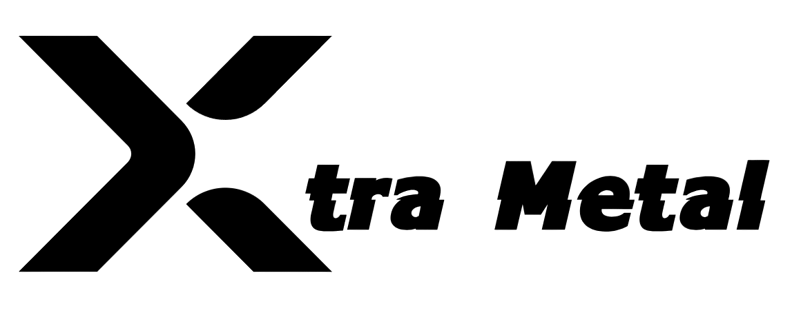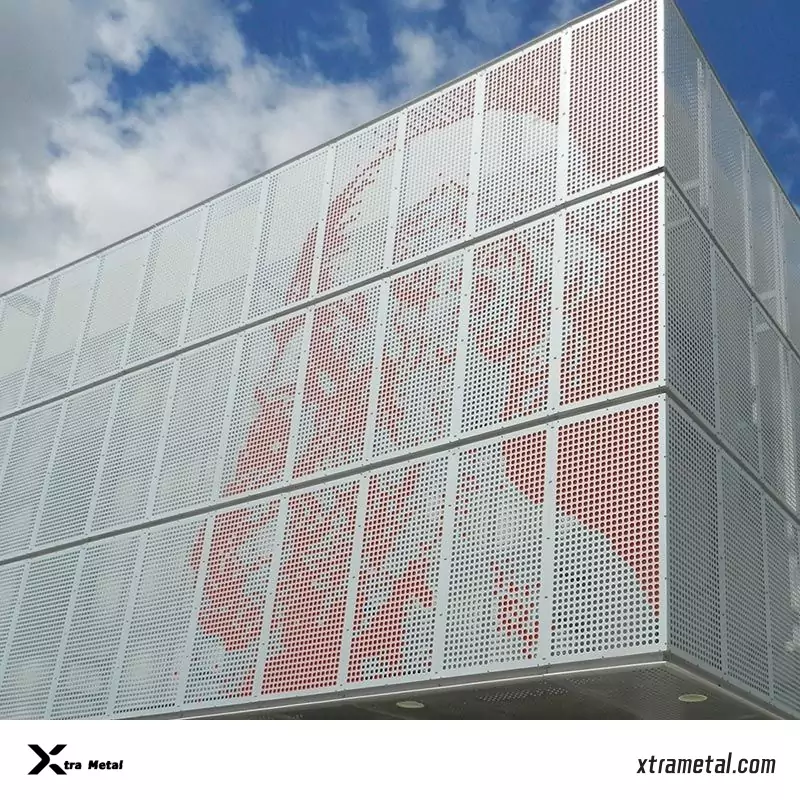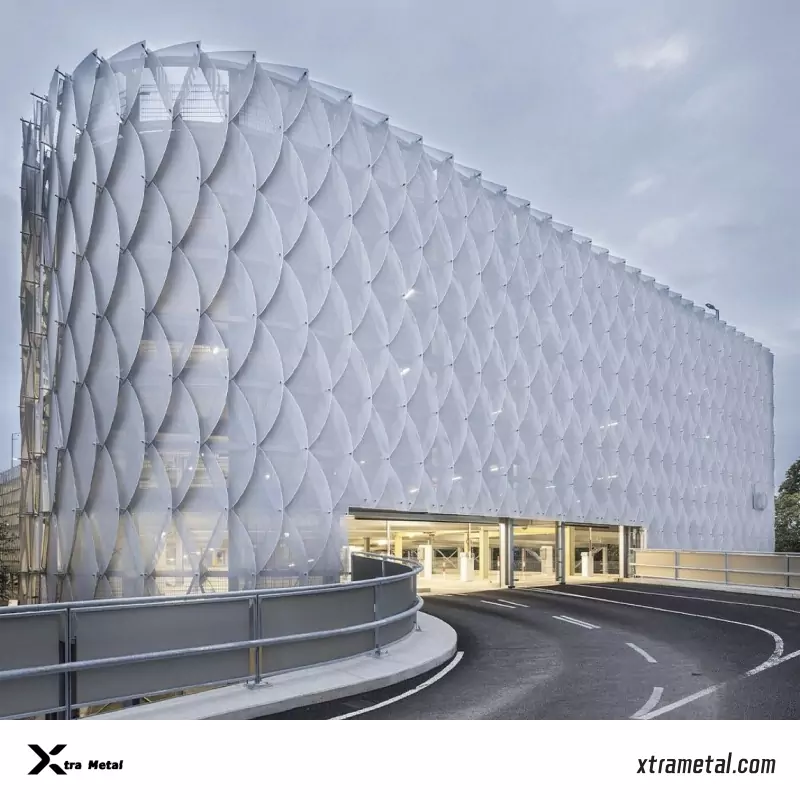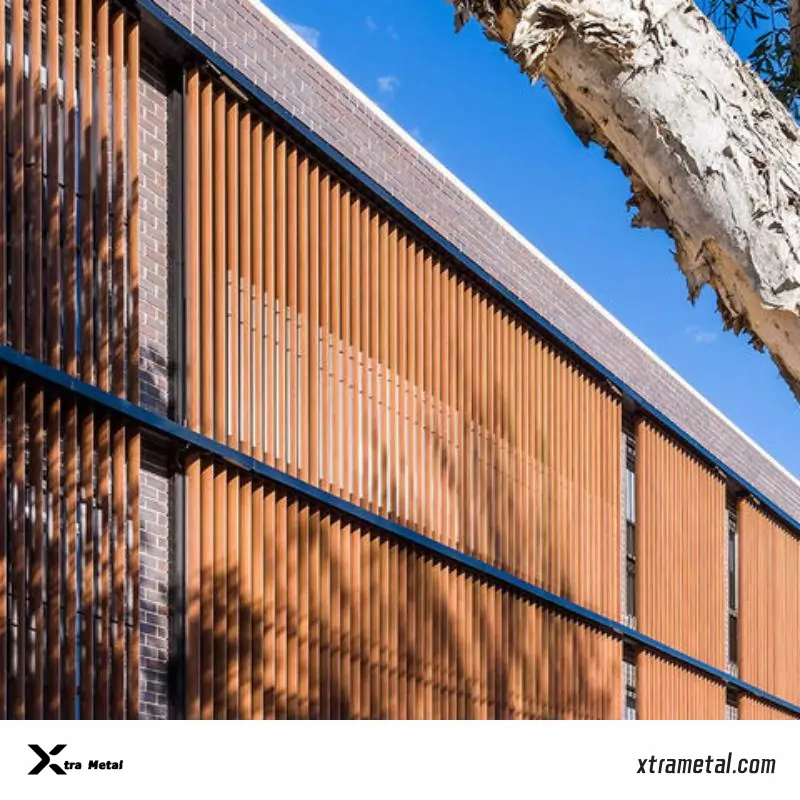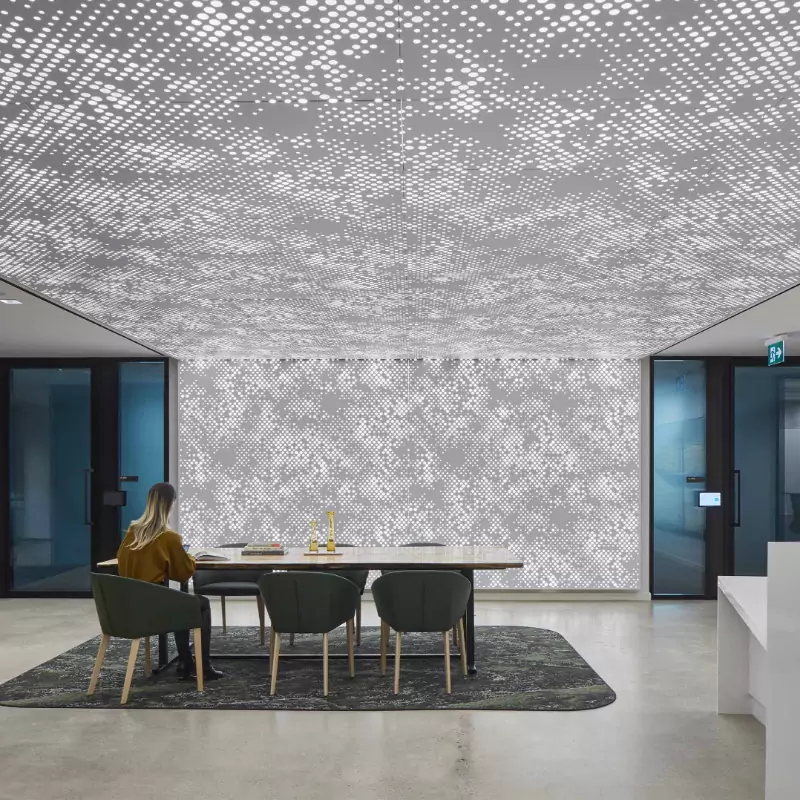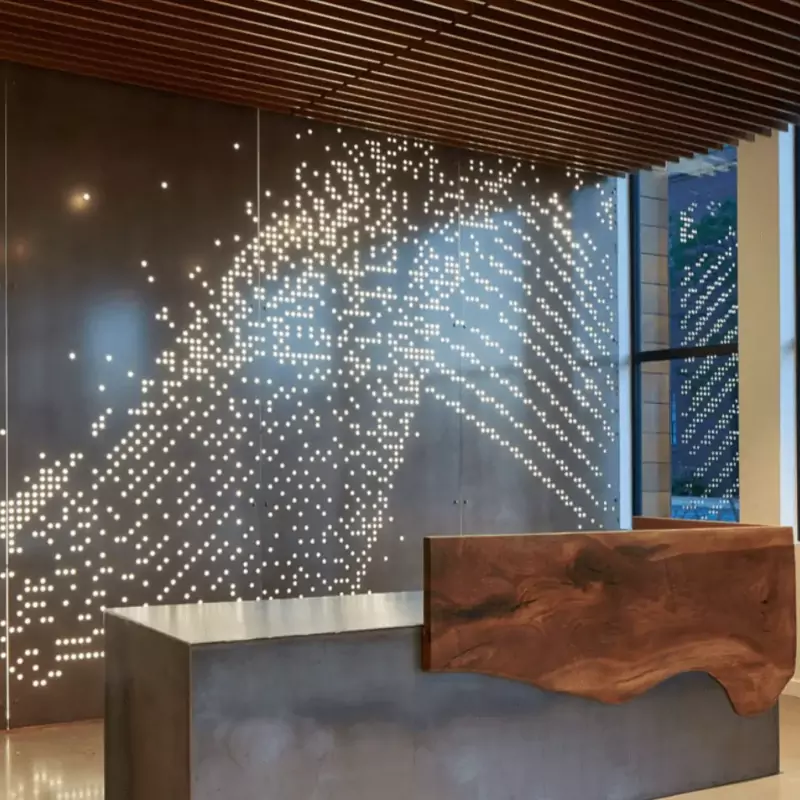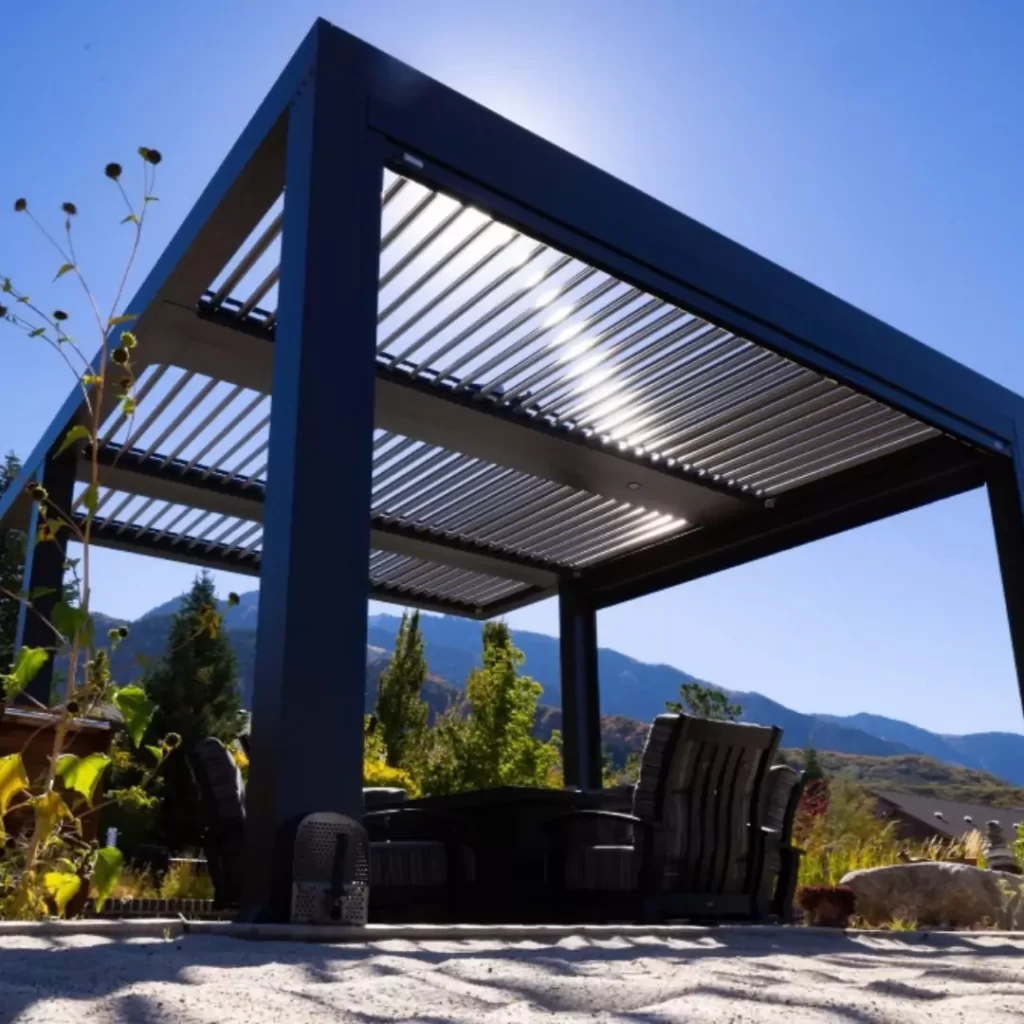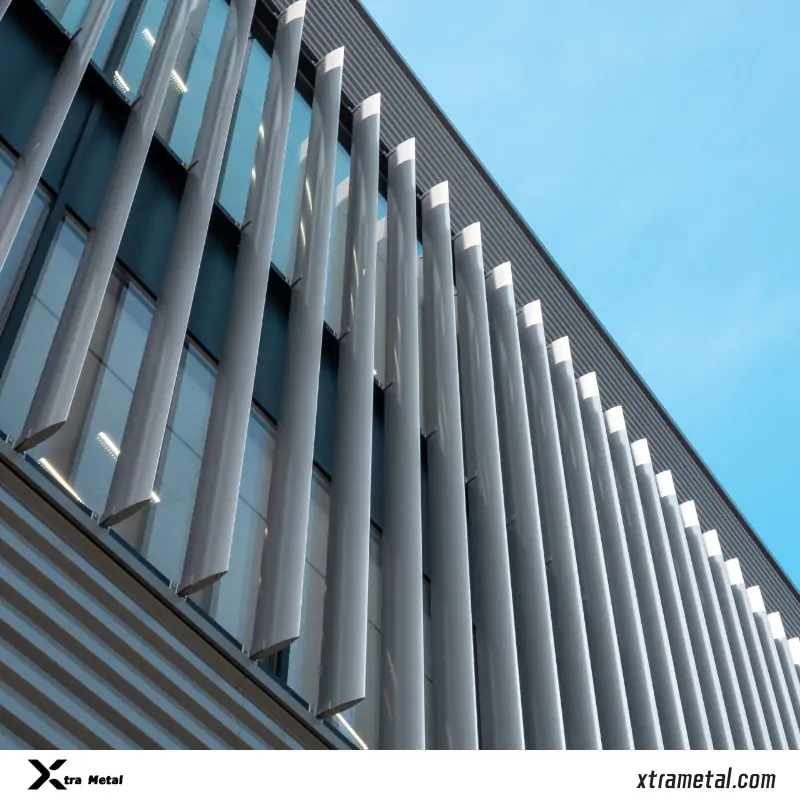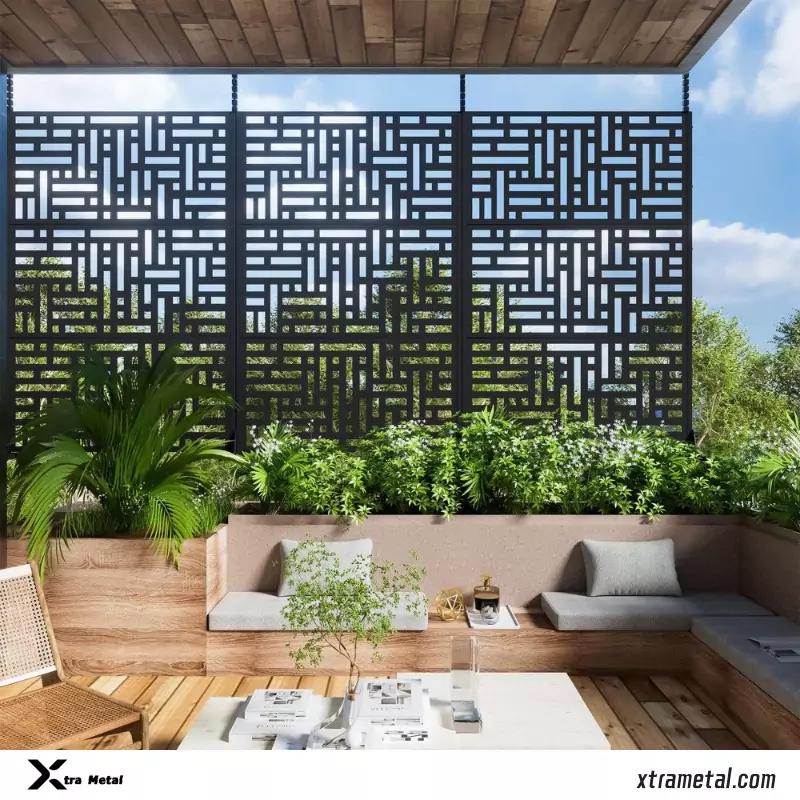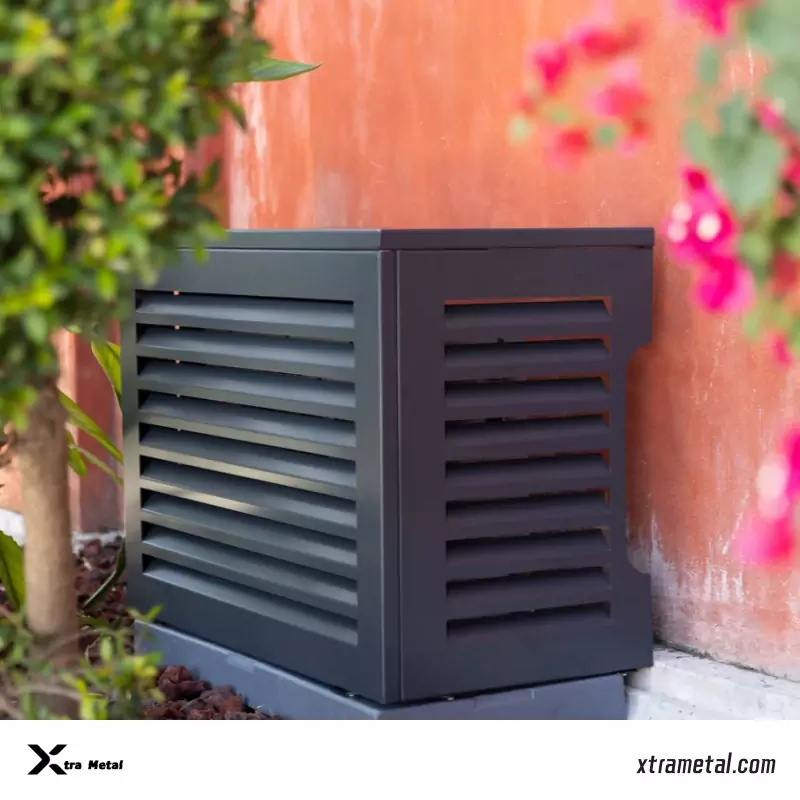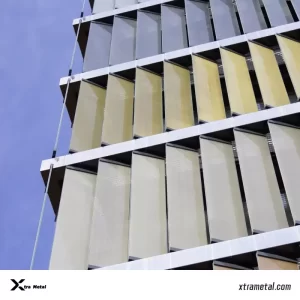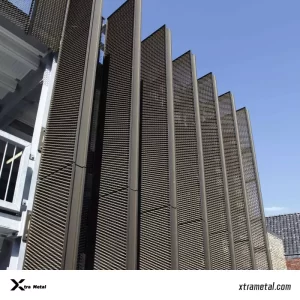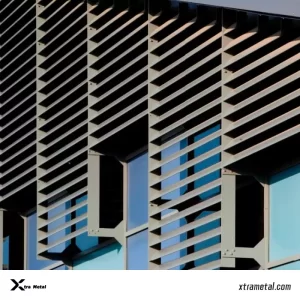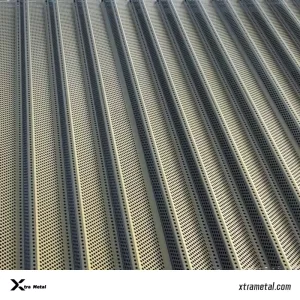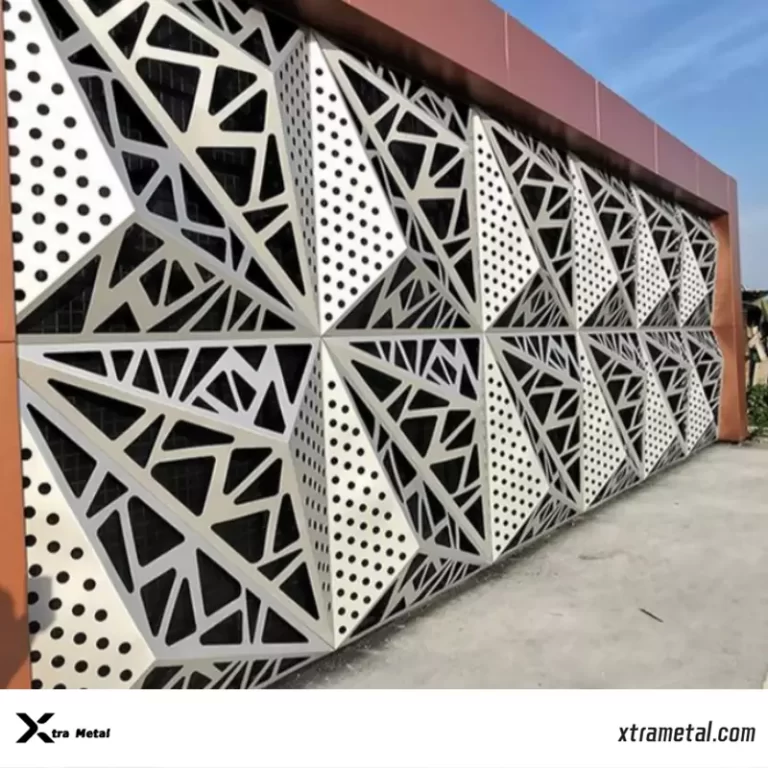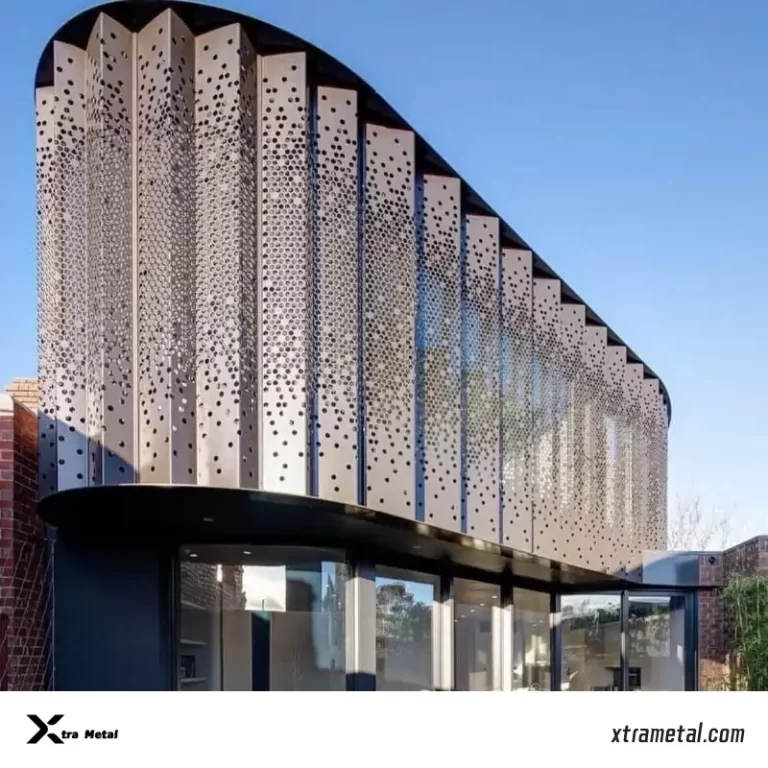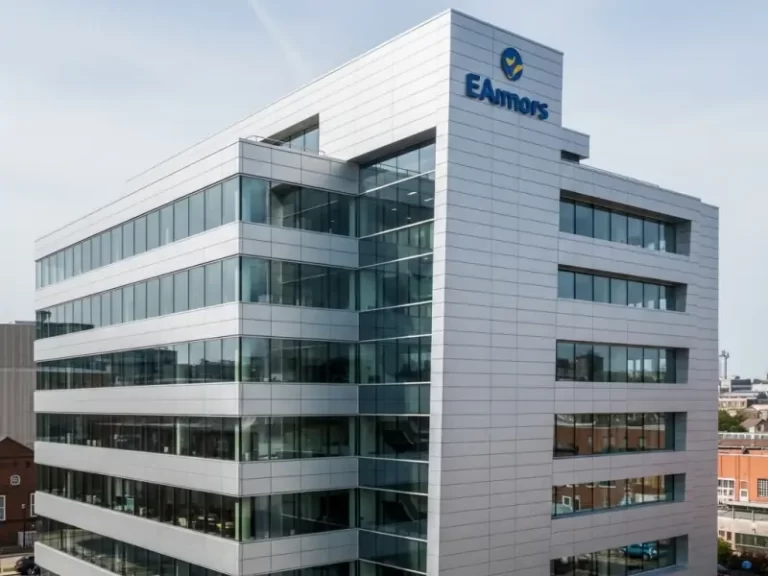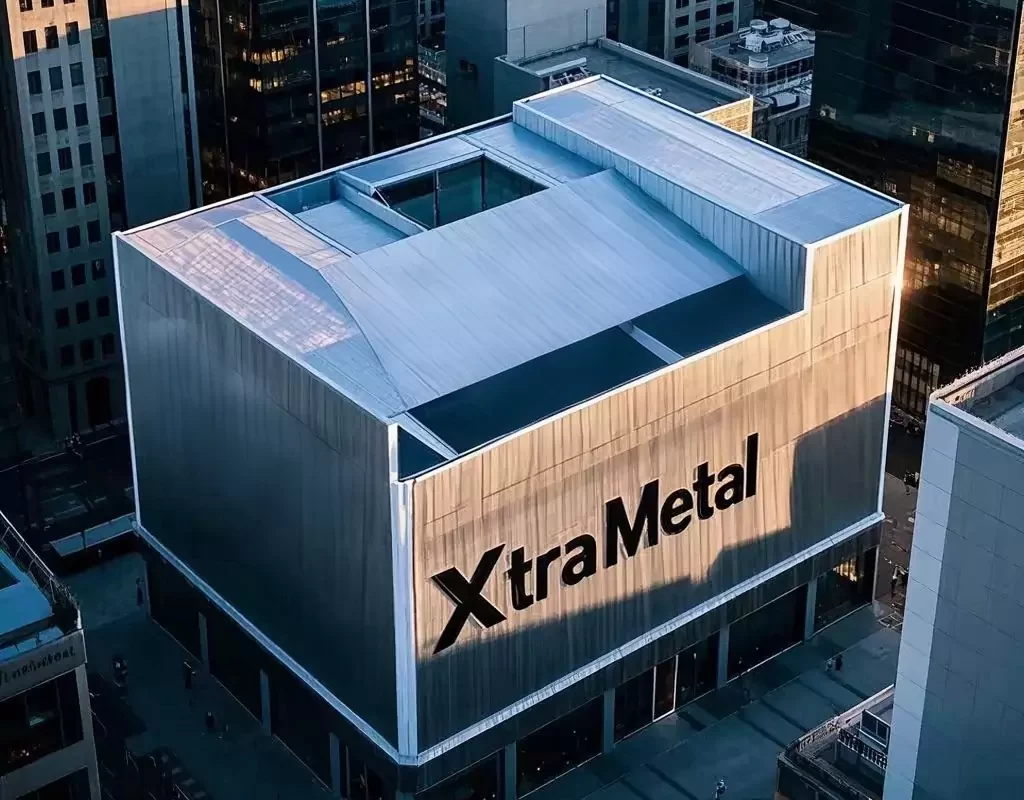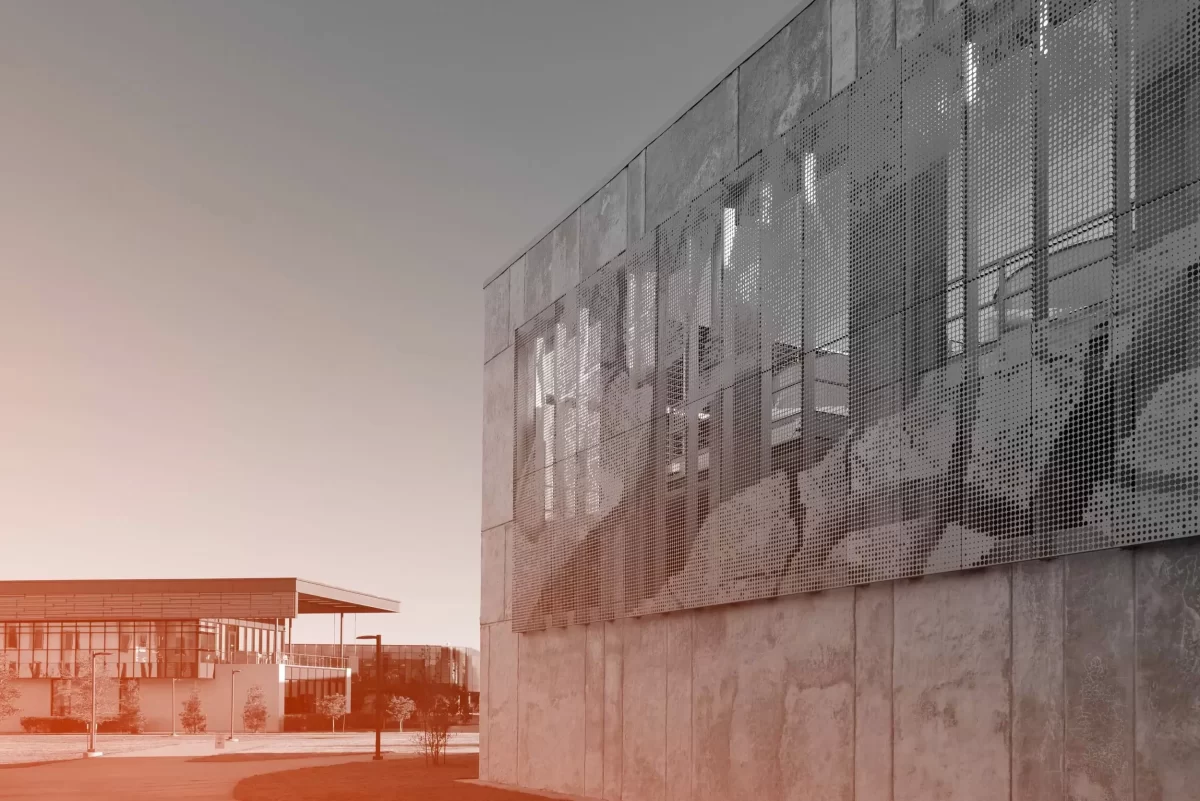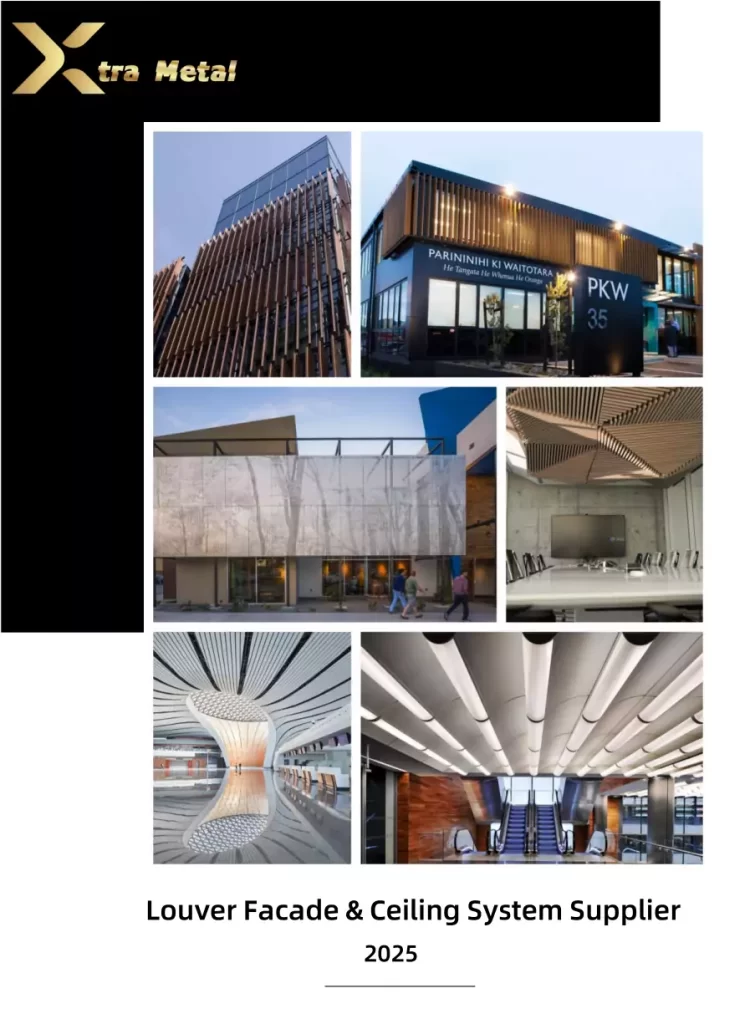Vertical and horizontal louvers differ primarily in orientation and functional advantages. Vertical louvers (aligned top-to-bottom) excel in directional airflow control and spatial division, ideal for screening views or guiding ventilation in façades. Horizontal louvers (side-to-side alignment) prioritize sunshade performance and rain protection, optimizing passive solar management. Structurally, vertical systems often require reinforced vertical supports, while horizontal designs leverage gravity for water runoff.
What are Horizontal Louvers

Horizontal louvers have blades that run parallel to the ground, like the slats of a Venetian blind laid flat. They’re a popular choice for many buildings because they’re great at handling two big challenges: sunlight and rain.
Characteristics and Benefits
Sunlight Control: Horizontal louvers are excellent at blocking high-angle sunlight, which is common on south-facing buildings in the Northern Hemisphere. By shading windows or facades, they reduce heat buildup, keeping interiors cooler and cutting down on air conditioning costs.
Rain Protection: These louvers deflect rainwater effectively. The slats guide water downward, preventing it from seeping into the building. Some designs even have drainage channels to handle heavy rain.
Flexibility: You can get horizontal louvers in fixed or adjustable versions. Adjustable ones let you tilt the blades to control light and airflow, which is handy for changing weather or user needs.
Aesthetic Appeal: Horizontal louvers often give buildings a sleek, modern look. They blend well with many architectural styles, from minimalist offices to cozy homes.
Applications
Horizontal louvers are commonly used in:
South-facing facades to manage high-angle sunlight.
Commercial buildings like offices or retail spaces, where glare control is key.
Residential homes for windows or patio covers, balancing light and privacy.
Ventilation systems in factories or warehouses ensure airflow while keeping out rain.
What are Vertical Louvers
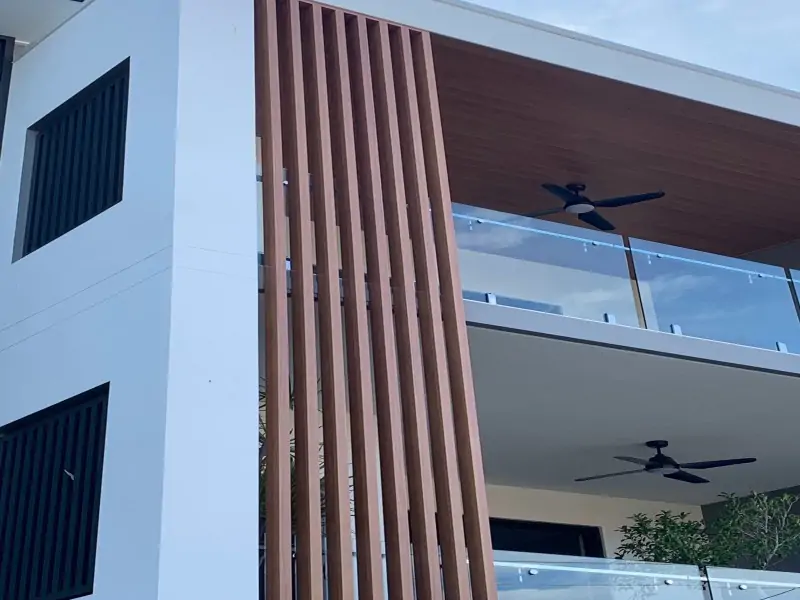
Vertical louvers have blades that run up and down, perpendicular to the ground. They’re less common than horizontal louvers but shine in specific situations, especially where wind or low-angle sunlight is a concern.
Characteristics and Benefits
Sunlight Control: Vertical louvers are perfect for blocking low-angle sunlight, like the kind you get in the early morning or late afternoon on east or west-facing buildings. This makes them ideal for reducing glare during those times of day.
Wind-Driven Rain Resistance: In stormy or coastal areas, vertical louvers outperform horizontal ones. Their design channels wind-driven rain downward, keeping it out of the building even in high winds. Some models can resist water penetration up to 20 psf, according to industry standards.
Low Maintenance: Because the blades are vertical, dust and debris don’t settle as easily. This means less cleaning for you, which is a big plus for busy facilities or hard-to-reach spots.
Unique Aesthetics: Vertical louvers can add a bold, distinctive look to a building. They’re often used to create striking visual patterns or to emphasize height in a design.
Applications
Vertical louvers are often found in:
East or west-facing facades to handle low-angle sunlight.
Coastal or desert environments where wind-driven rain or sand is a problem.
Industrial facilities need robust ventilation with minimal maintenance.
Modern architectural designs are aiming for a unique, vertical aesthetic.
Key Differences Between Vertical and Horizontal Louvers
To help you decide which louver type is right for your project, here’s a breakdown of the main differences:
| Aspect | Horizontal Louvers | Vertical Louvers |
| Blade Orientation | Parallel to the ground | Perpendicular to the ground |
| Sunlight Control | Best for high-angle sunlight (south-facing) | Best for low-angle sunlight (east/west-facing) |
| Rain Protection | Good for general rainwater deflection | Superior for wind-driven rain |
| Maintenance | May collect dust, requiring more cleaning | Less dust buildup, easier to clean |
| Aesthetics | Sleek, modern, blends with many styles | Bold, vertical emphasis, unique look |
| Common Applications | Offices, homes, south-facing facades | Coastal buildings, east/west facades, industrial |
Detailed Comparison
Orientation: The direction of the blades is the most obvious difference. Horizontal louvers run side to side, while vertical ones run up and down. This affects how they handle light and weather.
Sunlight Control: Horizontal louvers block high-angle sunlight, which is why they’re great for south-facing buildings where the sun is overhead. Vertical louvers tackle low-angle sunlight, perfect for east or west-facing walls where the sun is lower in the sky.
Rain Protection: Both types keep out rain, but vertical louvers are better in windy conditions. Their design uses gravity to channel water away, reducing the chance of leaks during storms.
Maintenance: Horizontal louvers can collect dust or debris on their flat surfaces, so they might need more frequent cleaning. Vertical louvers, with their upright blades, stay cleaner longer.
Aesthetics: Horizontal louvers often look sleek and understated, fitting many architectural styles. Vertical louvers make a bolder statement, emphasizing height or creating unique patterns.
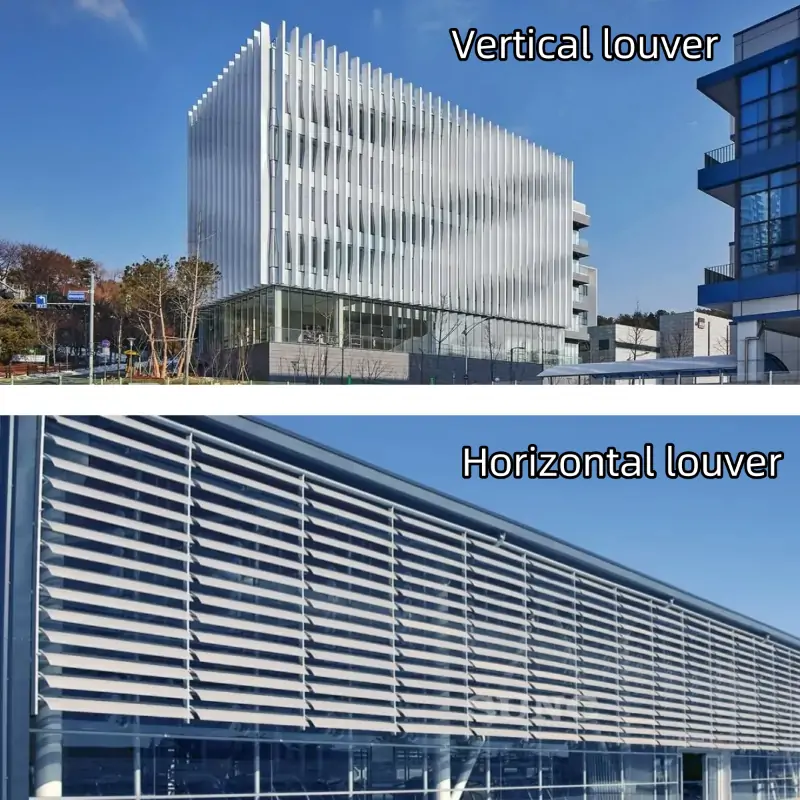
Choosing the right Louver for Your Project
Picking between vertical and horizontal louvers isn’t just about looks—it’s about what your building needs. Here are some factors to consider:
Climate: If you’re in a windy, rainy area like a coastal city, vertical louvers are likely your best bet. They handle wind-driven rain better, keeping your building dry. In sunnier, less stormy areas, horizontal louvers might be enough to manage rain and heat.
Building Orientation: The direction your building faces matters. South-facing facades get high-angle sunlight, so horizontal louvers are ideal. East or west-facing walls deal with low-angle sunlight, making vertical louvers a better fit.
Design Preferences: Think about the vibe you’re going for. Horizontal louvers give a clean, modern look that blends easily. Vertical louvers stand out, adding drama or emphasizing a building’s height. Both can be customized with colors or finishes to match your vision.
Energy Efficiency: Louvers can save you money by cutting energy use. Studies show that dynamic louver systems, paired with light dimming, can reduce energy consumption by up to 34% in office buildings (ScienceDirect study). By controlling sunlight and boosting natural ventilation, louvers reduce the need for air conditioning or heating.
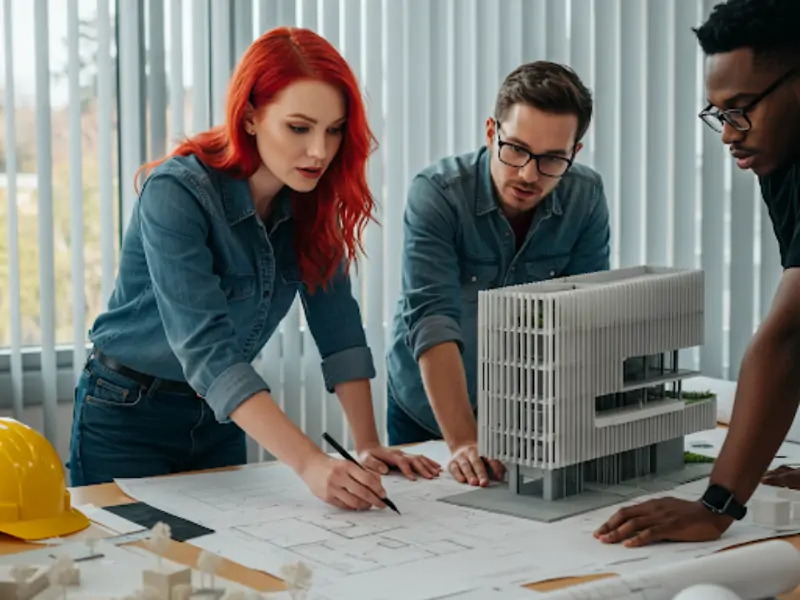
Materials Overview
Louvers are typically made from various materials, each suited to different needs. Common materials include aluminum, steel, wood, glass, plastic or PVC, and composites like fiberglass. Louvers, used in windows, doors, and ventilation systems, are crafted from materials that balance functionality and design. Here’s a breakdown:
●Aluminum: Lightweight, durable, and corrosion-resistant, ideal for modern applications.
●Steel: Strong and suitable for industrial use, often powder-coated for extra protection.
●Wood: Offers a natural look with good insulation, but requires more maintenance.
●Glass: Common in windows for light and air control, allowing visibility.
●Plastic or PVC: Lightweight and moisture-resistant, perfect for humid areas.
●Composite Materials: Such as fiberglass or FRP, providing durability with low maintenance.
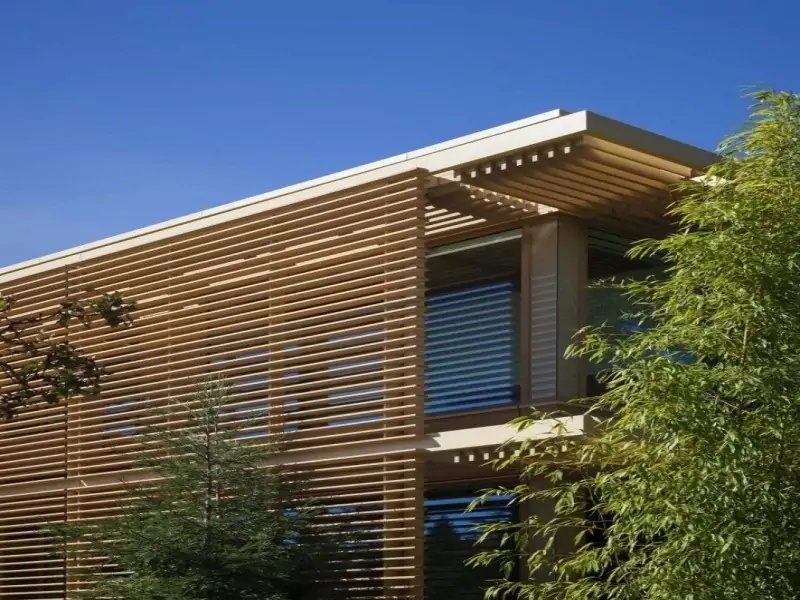
Latest Trends in Louver Design
Louvers aren’t stuck in the past—they’re evolving with modern architecture. Here are some trends you might want to consider:
Smart Technology: Some louvers now come with remote controls or automation, adjusting automatically based on sunlight or weather. This boosts energy efficiency and user comfort.
Sustainable Materials: With a focus on green building, louvers are being designed to maximize energy savings, aligning with eco-friendly standards.
Creative Shapes: Architects are getting bold, using louvers in kinetic designs that move with the sun or wind, adding both function and visual flair. Check out Apple Plywoods’ article on innovative louver designs.

FAQ Section
Got questions about louvers? Here are answers to some common ones:
Q: What materials are louvers made from?
A: Louvers can be made from wood, glass, plastic, or metal. Aluminum is popular for its durability, light weight, and resistance to rust, making it a great choice for most projects.
Q: Can louvers be adjusted?
A: Yes! Adjustable louvers let you tilt the blades to control light and airflow. Fixed louvers stay in one position but still provide ventilation and protection.
Q: Do louvers help save energy?
A: Definitely. By blocking excess sunlight and improving airflow, louvers reduce the need for air conditioning and heating. Studies show energy savings of up to 34% with the right louver setup.
Q: How do I maintain louvers?
A: Aluminum louvers are low-maintenance. Just clean them with mild soap and water occasionally. Check for any loose parts during regular building inspections.
Q: How do I know what size louvers I need?
A: The size depends on your ventilation needs and the size of the opening. A professional can calculate the right dimensions to ensure proper airflow and protection.
Q: Can louvers match my building’s color scheme?
A: Absolutely. Aluminum louvers can be powder-coated or painted in various colors to blend with your design.
Q: Are there building codes for louvers?
A: Yes, codes vary by location. Check local regulations for ventilation, fire safety, and structural rules before installing louvers. Our team at Xtra Metal Group can help ensure compliance.
Conclusion
Choosing between vertical and horizontal louvers comes down to your project’s needs—climate, building direction, and the look you want. Horizontal louvers are great for sunny, south-facing buildings, while vertical louvers shine in windy, rainy areas or on east/west facades. Both can be customized to boost your building’s style and efficiency, especially when made from durable aluminum.
At Xtra Metal Group, we’ve spent over 30 years perfecting metal building solutions, including top-notch aluminum louvers. Our one-stop service, global expertise, and focus on quality mean we can deliver exactly what your project needs. Ready to get started? Contact us today to explore how our louvers can make your building better, inside and out.
